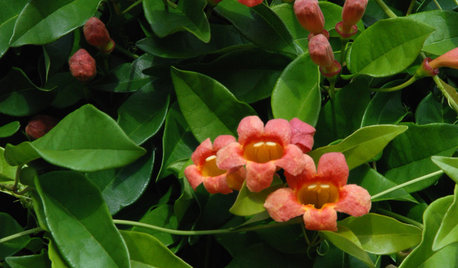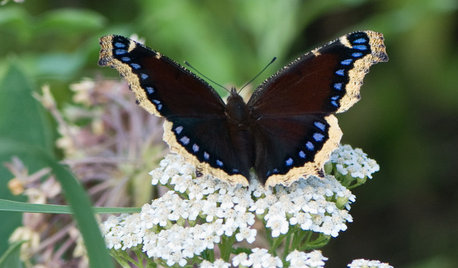Great Butterfly Day!
14 years ago
Related Stories

GARDENING GUIDESGreat Design Plant: Butterfly Milkweed, a Beacon in the Prairie
Vivacious orange flowers for you, nectar for the butterflies and bees. Asclepias tuberosa is worth planting for more reasons than one
Full Story
FLOWERS AND PLANTSHelp Monarchs and Other Butterflies by Planting Common Milkweed
Summer-blooming Asclepias syriaca is an important larval host plant for the monarch butterfly and attracts a number of pollinating insects
Full Story
CALIFORNIA NATIVE PLANTSGreat Design Plant: Asclepias Is Attractive to Monarch Butterflies
Increase monarch butterfly populations in California by planting stunning native milkweeds
Full Story
GARDENING GUIDESGreat Design Plant: Butterfly-Friendly Crossvine
Colorful climber gives gardens a boost year-round with bountiful blooms
Full Story
GARDENING GUIDESGreat Design Plant: Autumn Sage Brings Color and Butterflies
Whether you live in the arid desert or the humid South, you'll likely find this deer-resistant beauty as irresistible as winged creatures do
Full Story
GARDENING GUIDESMourning Cloak Butterflies Herald Spring
These butterflies feed at tree-sap flows in spring and visit native plant flowers for nectar in early summer
Full Story
GARDENING GUIDES6 Plants That Beat Butterfly Bush for the Wildlife Draw
It's invasive, a nonnative and a poor insect magnet. Check out these better alternatives to butterfly bush in the garden
Full Story
GARDENING FOR BUTTERFLIESBe a Butterfly Savior — Garden for the Monarchs
Keep hope, beauty and kindness alive in the landscape by providing a refuge for these threatened enchanters
Full Story
GARDENING GUIDES20 Favorite Flowers for Butterflies and Bouquets
Discover perennials and annuals that do double duty as butterfly magnets and versatile cut flowers
Full Story
FALL GARDENINGWhat Monarch Butterflies Taught Me About Garden Design
Thinking like a butterfly leads to fresh perspectives in the garden and in life
Full StorySponsored






susanlynne48
MissSherryOriginal Author
Related Professionals
Havre de Grace Landscape Architects & Landscape Designers · Kapaa Landscape Architects & Landscape Designers · East Haven Landscape Contractors · Federal Way Landscape Contractors · Fort Payne Landscape Contractors · Lebanon Landscape Contractors · Nutley Landscape Contractors · San Rafael Landscape Contractors · Hutto Fence Contractors · Ken Caryl Fence Contractors · South Miami Fence Contractors · San Jose Window Contractors · Spokane Window Contractors · Phelan Window Contractors · Discovery Bay Window Contractorsbananasinohio
bernergrrl
MissSherryOriginal Author
susanlynne48
MissSherryOriginal Author
susanlynne48
MissSherryOriginal Author
susanlynne48
MissSherryOriginal Author
jrcagle
MissSherryOriginal Author
susanlynne48
MissSherryOriginal Author
susanlynne48
MissSherryOriginal Author
MissSherryOriginal Author
cecropia
susanlynne48
MissSherryOriginal Author